 Your new post is loading...
 Your new post is loading...

|
Scooped by
Christophe Fourtet
April 25, 2013 9:22 PM
|
bladeRF - low-cost, professional USB 3.0 Software Defined Radio bladeRF is a Software Defined Radio (SDR) platform designed to enable a community of hobbyists, and professionals to explore and experiment with the multidisciplinary facets of RF communication. By providing source code, thorough documentation, easy to grasp tutorials, and a place for open discussion modern radio systems will be demystified by covering everything from the RF, analog, and digital hardware design to the firmware running on the ARM MCU and FPGA to Linux kernel device drivers.

|
Scooped by
Christophe Fourtet
April 25, 2013 9:02 PM
|
Lime Microsystems - configurable 3G & 4G transceivers

|
Suggested by
Akash
October 25, 2012 5:14 PM
|
Here is an interesting low cost SDR "thing" (Thank you Akash !) ASRP3 is based on a classical I/Q direct conversion architecture using ADL5380 I/Q demod chip from Analog Device, as well as their famous AD9262 10 MHz 16 bits sigma delta ADC. The AD9262 presents 87 dB dynamic over the 10 MHz range, due to the 16 bits...Which is good for the price ! Indeed, final dynamic will not be 87 dBs due to input stages, but we should obtain pretty good results from this device anyway...And you can still implement clever decimation to increase dynamic on a reduced bandwidth. This being said, this receiver will tune its 10 MHz SDR window from 400 to 4400 MHz, which opens a bunch of possibilities.

|
Scooped by
Christophe Fourtet
October 15, 2012 3:56 PM
|
Here we are, the new version is coming, and maybe already available. Same principle than original FunCube Dongle (A "TV tuner like" radio in front of a low cost 16 bit soundcard -> USB chipset). But this time, sampling rate is 192 KSamp/s, and thus SDR coverage is close to 2 x 96 KHz which means 192 KHz. And probably more important for potential users : RF coverage starts from 150 KHz to 240 MHz as well as 420 to 1900 MHz, bringing Shortwave capability in top of most used V-UHF spectrum capability.

|
Scooped by
Christophe Fourtet
April 8, 2012 12:16 PM
|
This was one of the first direct sampling project based on AFEDRI8201 IC.

|
Scooped by
Christophe Fourtet
April 8, 2012 11:22 AM
|

|
Scooped by
Christophe Fourtet
February 18, 2012 4:50 AM
|
When I presented you the well-known RF-Space company http://www.rfspace.com ... I definitely forgot to mention their SDR receiving Software "SpectraVue". It has indeed been designed for their Harware, but it will work with many other Hardware, particularly common I/Q systems ... And it is 100% free ... And it is working exceptionally well under Windows platforms ! Try it, and adopt it !

|
Scooped by
Christophe Fourtet
February 8, 2012 11:50 PM
|
The SDR-ONE is a low cost, high performance transmit / receive module for experimentation and integration into products. The module can be used stand alone or plugged into other products. It offers very high performance with the use of a 14 bit ADC/DACs. The SDR-ONE RX/TX module offers 48,96 and 192 KHz receive bandwidths over I2S, optical audio (S/PDIF) and IQ analog out. In addition, up to 40 KHz of BW can be transmitted at a 48 Khz sample rate. The SDR-ONE sets the RX sample rate of the sound-card when using the S/PDIF or I2S outputs. In TX, I/Q signal is received via the IQ analog input or the I2S master port. The FPGA and flash memory can be reprogrammed over the built in USB port in seconds without the need of a special programming cable. The FPGA UCF file and code examples are supplied for those willing to write their own code.

|
Scooped by
Christophe Fourtet
January 23, 2012 3:53 AM
|
PERSEUS SDR software version 4.00b is released.

|
Scooped by
Christophe Fourtet
January 20, 2012 11:01 PM
|
Baudline is a time-frequency browser designed for scientific visualization of the spectral domain. Signal analysis is performed by Fourier, correlation, and raster transforms that create colorful spectrograms with vibrant detail. Conduct test and measurement experiments with the built in function generator, or play back audio files with a multitude of effects and filters. The baudline signal analyzer combines fast digital signal processing, versatile high speed displays, and continuous capture tools for hunting down and studying elusive signal characteristics. Source code is available.

|
Scooped by
Christophe Fourtet
January 20, 2012 10:21 PM
|

|
Scooped by
Christophe Fourtet
January 20, 2012 8:16 PM
|
QS1R from Software Radio Laboratory LLC, is a direct sampling SDR receiver covering 10 KHz to 62.5 MHz. It is based on LTC2208 16 bits 130 MS/s A2D associated to a Cyclone III FPGA. Connected to a PC through its USB 2.0 interface, it can be operated with its software companion "SDRMAX" http://www.srl-llc.com/qs1r_latest/index.html or with HDSDR or Winrad (see previous articles for those softwares). It has to be noticed that SDRMAX source code is available...

|
Scooped by
Christophe Fourtet
January 18, 2012 10:25 PM
|
DSPRX was designed by Michael Keller in 2001, and as such, was one of the first SDR software available on internet ! I and Q signals are classically fed into right/left channel of a soundcard. DSPRX is realy simple, and will run on a 500MHz AMD ! Amplitude balance and constant time delay between right/left channel can be trimmed. DSPRX software + TinySDR hardware + 500 MHz AMD PC...Probably the cheapest SDR setup you can imagine !!!
|

|
Scooped by
Christophe Fourtet
April 25, 2013 9:10 PM
|
SDR# (read SDR Sharp) is a high performance Software Defined Radio application. It is written in C# with both object design correctness and performance in mind. The project started as a simple proof of concept program to get hands into DSP techniques and has evolved to what it is today: A fully featured SDR capable of handling samplerates from kHz level soundcards up to multi hundred MHz dedicated samplers, thanks to its multi-core architecture.

|
Scooped by
Christophe Fourtet
April 25, 2013 8:33 PM
|
Myriad – RF Created by Azio - order a board ($299) - download KiCAD file The Myriad – RF board is a multi-band, multi-standard RF module, based on the state of the art LMS6002D transceiver IC by ...

|
Scooped by
Christophe Fourtet
October 25, 2012 10:40 AM
|
EasySDR is an other "FunCube Dongle like" device. Characteristics and performances are very similar...If not the same. It is compatible with most well known SDR software. Specification:
- 64 MHz - 1700 MHz frequency range,
- 48 kb/s audio bandwidth,
- DLL interface for HDSDR application,
- small device size: 37x22x78 mm

|
Scooped by
Christophe Fourtet
April 8, 2012 12:20 PM
|
And finally...An other project based on AFEDRI8201 and an FPGA and USB interface based on a low-cost board from Digilent Inc. The version used (Nexys2) employs a 1.2M gate Spartan III FPGA from Xilinx. The board provides USB 2.0 (480 Mbps) via a chip from Cypress semiconductor.

|
Suggested by
Alex
April 8, 2012 12:14 PM
|

|
Suggested by
Avrel
April 8, 2012 8:31 AM
|
With a simple digital TV USB capture card, you can build your own software defined radio or spectrum analyzer. While it may not be as cool as [Jeri Ellsworth]'s SDR, it's still very useful and only requires $20 in hardware. However, be carefull, you have what you get for 20 $...I/Q interface is 8 bits which means around 48 dB maximum dynamics. This is OK for a single signal, isolated from others by physical filtering (TV signal indeed !), but not enough for narrowband multisignal handling (14 to 16 bits being a minimum). A solution is to oversample your baseband, and then decimate to increase the effective number of bits. For example, if you oversample by 128 around 4 Msamp/s, you will obtain an effective sampling rate of around 31 Ksamp/s, thus a combined I/Q bandwidth of 31 KHz after digital filtering, with an effective number of bits of 8+3,5=11,5 bits (70 dB dynamic). Analyze of the used Realtek chipset shows analog I/Q signal if fed to digital A/D-USB chip via 4 capacitors (I/Q differential interface). It is then possible, through HW modifications, to interpose 2 differental analog baseband filters in order to improve the system in addition to oversampling... In conclusion, an interesting solution, close to the "funcube dongle" concept, already presented here. But the funcube has more dynamic, by design.

|
Scooped by
Christophe Fourtet
February 18, 2012 3:21 AM
|
SDR MK1.5 Radio 'Andrus' is a shortwave Receiver covering 5KHz to 30 MHz with Network Interface. It is based on the National Semi LM97593 Dual ADC / Digital Tuner / AGC chip. Datasheet here : http://www.national.com/pf/LM/LM97593.html#Overview Here are some of its characteristics : -5kHz to 30MHz frequency range -0.02Hz tuning resolution -123dB total dynamic range with AGC (80dB with AGC off) -64MHz internal sampling rate -User Programmable AGC (automatic gain control) with enhanced Power Detector -48kHz/16-bit Ch A and Ch B simultaneous USB audio output, 196kHz output sample rate for single channel (A or B or diversity) in SDR-IQ protocol mode -10/100Base Ethernet interface for 400kHz sample rate through network (NetSDR protocol mode) -Max current consumption 800mA -Open software and hardware design for DIY development, filter upgrades etc. It is effectively an open design, so in case you want to customize the firmware of the radio for your own purpose, it is perfectly doable! As the schematic and layout for the radio is also available, it may also serve as the platform for your own integration project. The on-board Atmel 32-bit AT32UC3B0512 processor development GNU tools (C/C++, asm) with really nice Microsoft Visual Studio version 10 IDE are freely available from Atmel and there is an extension connector on-board with RS232TTL UART, I2C and GPIO pins dedicated for add-on hardware and user development. There is also a simplistic analog audio output on-board (24kHz/16-bit mono), that can be used for whatever it could be useful for, and a small prototyping area (space originally dedicated for custom PoE (power-over-ethernet) circuit development). Complete schematics are here : http://files.uvb-76.net/SDR_MK1.5/SDR_MK1.5_Schematic_v1.0_col.pdf

|
Suggested by
Martin
February 3, 2012 3:52 PM
|
PM-SDR offers an excellent coverage/performance/cost compromise, for various 0.1 to 55 MHz SDR receive applications. It is a sum of 'little tricks" that leads to this point of optimisation. In addition, it is built in a small packaging. Based on I/Q principle, it delivers an analog I/Q interface. Thus final performance is, as usual, partially dependant on your A/D's quality and dynamics (noise floor as well as linearity...Etc). If you use a sound card for such a purpose, be carefull with "ugly" chipsets and/or designs. Potentially prefer an external high end one, like EMU0204... See RFHam site : http://www.rfham.com/c80.html PM-SDR is compatible with a large variety of SDR software. You can buy PMSDR here : http://www.rfsystem.it/shop

|
Scooped by
Christophe Fourtet
January 20, 2012 11:07 PM
|
An experimental SDR receiver using the Conexant Fusion Bt878 A2D chip, working at 896 KS/s.

|
Scooped by
Christophe Fourtet
January 20, 2012 10:33 PM
|
A fast, free C FFT library; includes real-complex, multidimensional, and parallel transforms. Benchmarked against many other FFTs.

|
Scooped by
Christophe Fourtet
January 20, 2012 8:52 PM
|
High Performance Software Defined Radio design group, open source design, uses FPGA...

|
Scooped by
Christophe Fourtet
January 18, 2012 10:35 PM
|
|



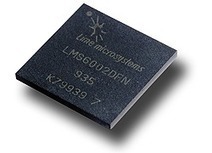


 Your new post is loading...
Your new post is loading...

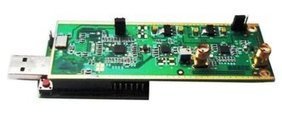

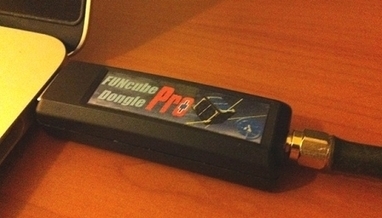


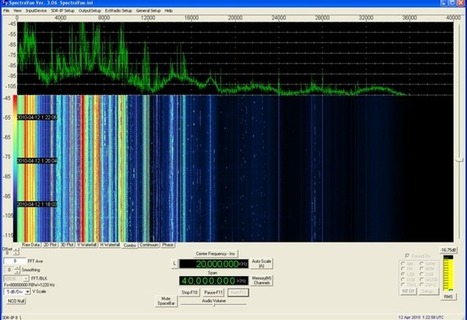
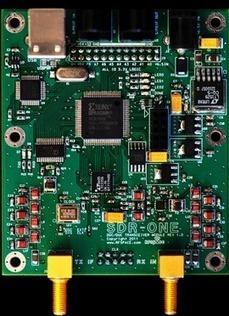

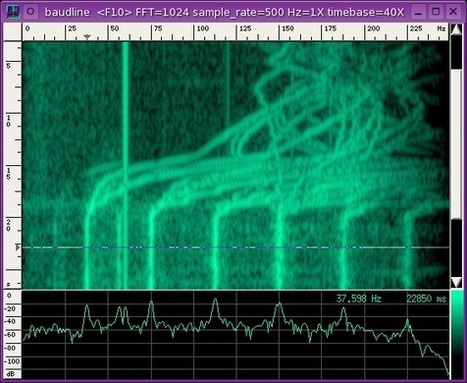
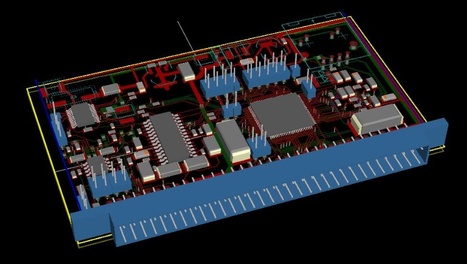
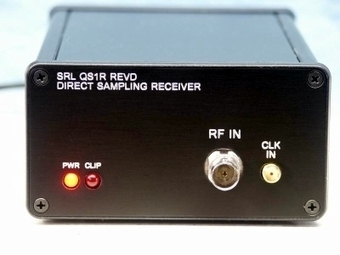

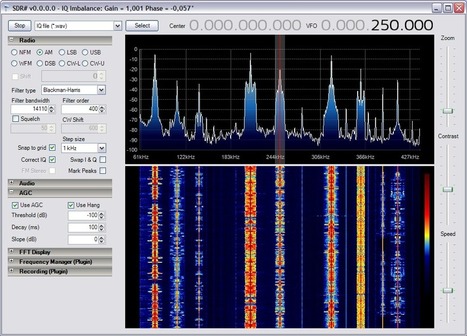
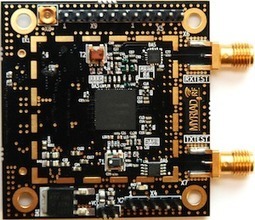

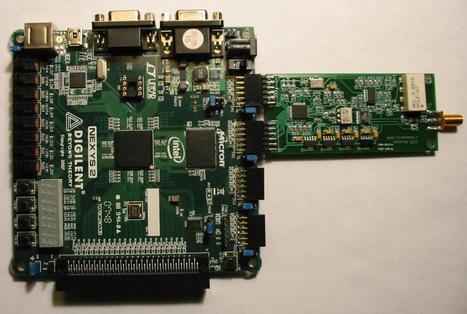


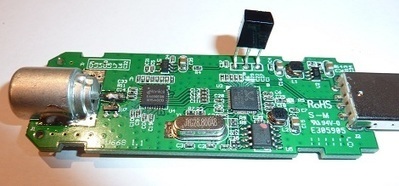


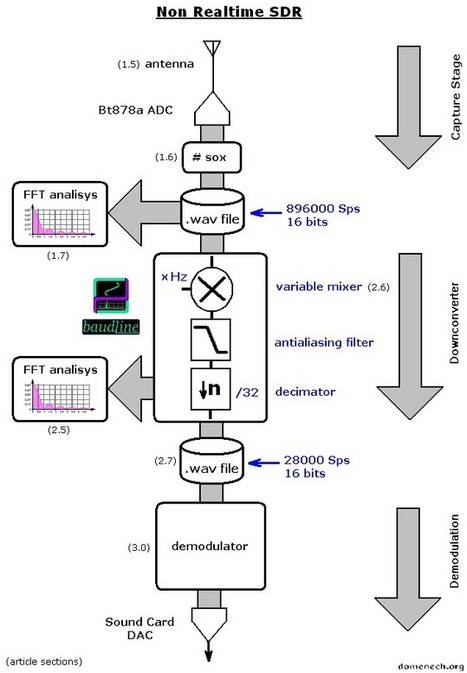

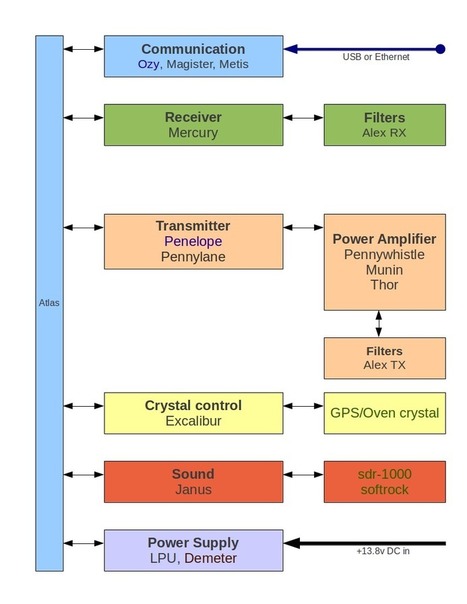
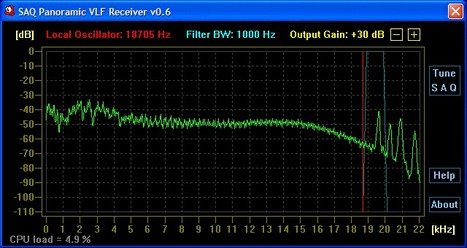





Here is an highly configurable RF, well suited for reasonable perf/cost ratio SDR projects, coming in a 9x9 mm 120 pins aQFN. It covers 300 to 3800 MHz, with I/Q channels programmable from 1.5 to 28 MHz. 12 bits ADC and DAC are integrated. Not bat. But remember to decimate in order to gain few bits, if you want to have quite high dynamic...12 bits is just enough in many cases.
The 2.4 Hz resolution Frac-N synthesizer presents a phase noise roughly around -100 dBc at 800 MHz and -93 dBc in the 2 GHz region. Not bad for a low cost wide band device.
Noise figure and IP3 are acceptable.
Output power is annouced at 6 dBm CW in the datasheet.
datasheet is there : http://www.limemicro.com/download/LMS6002Dr2-DataSheet-1.2r0.pdf